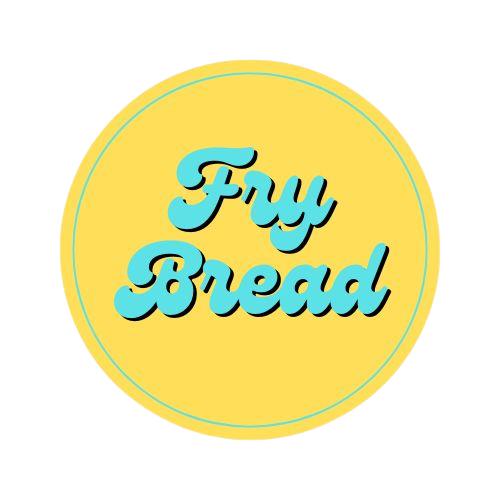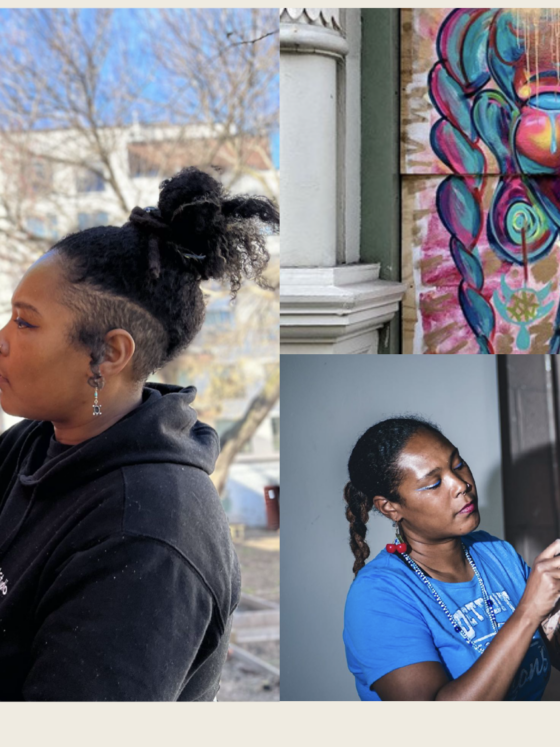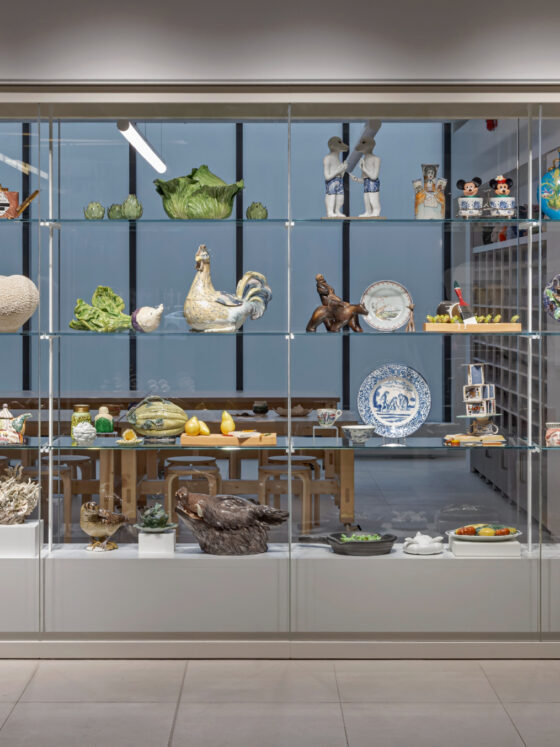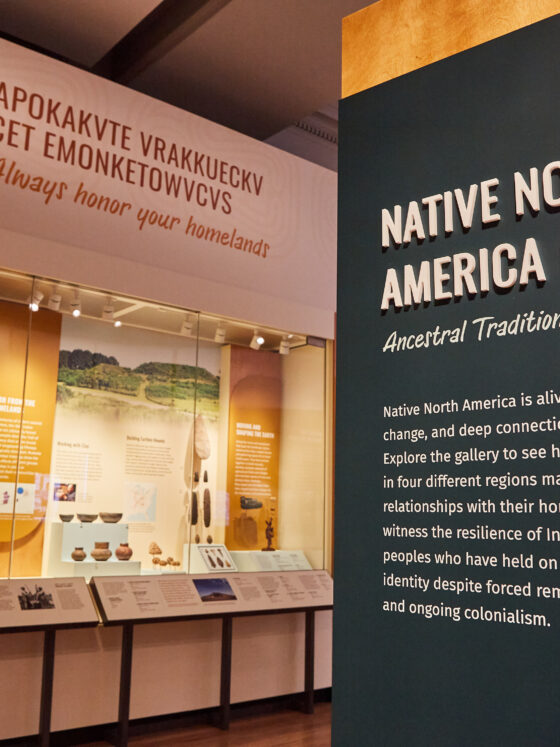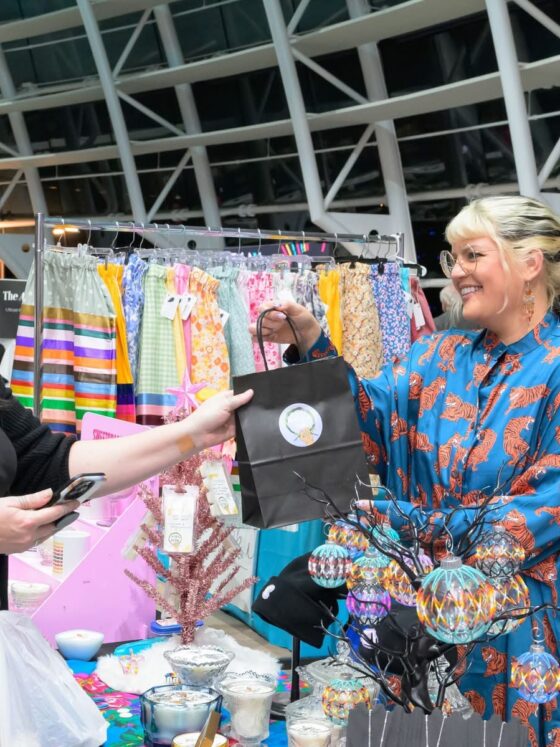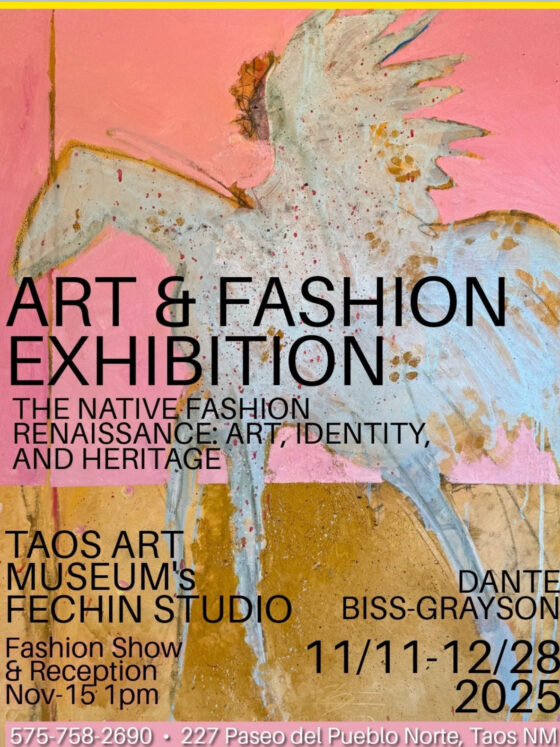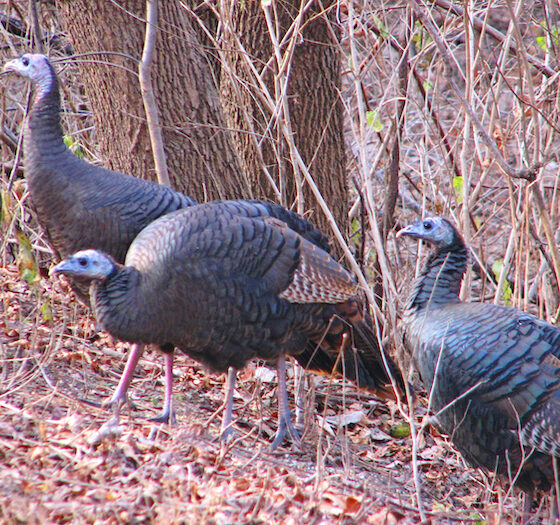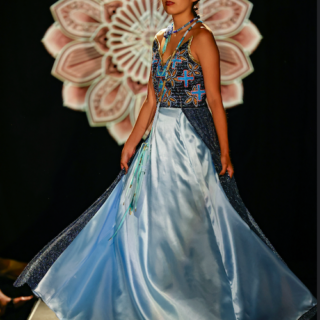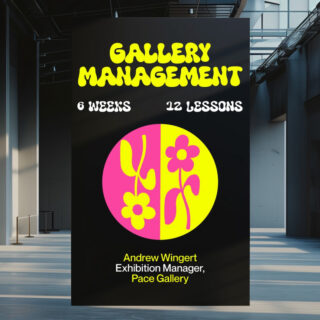Ingredients: The Fry Bread Interview with Allison Levering
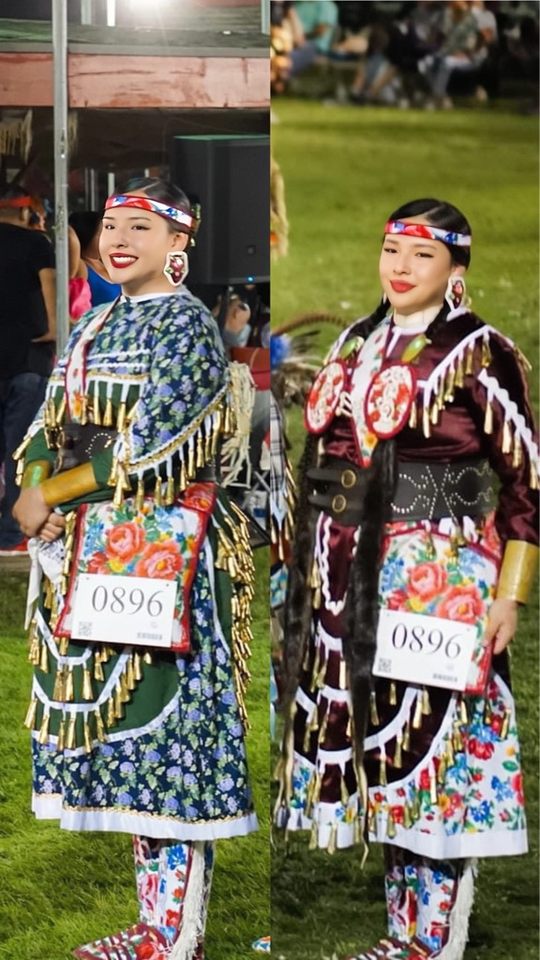
By Emma Saville
Allison Levering is a multi-disciplinary artist from the Ho-Chunk Hocak Nisoc Haci–the people of the big voice and the water north of the Missouri River–also known as the Winnebago Tribe of Nebraska. She is a third-year student studying media communications at Haskell Indian Nations University. In addition to her art, Levering is an Anchor for Good Morning Indian Country and a DJ for the Haskell Hour on KJHK 90.7 FM in Lawrence, Kansas. Fry Bread sat down with Levering in Lawrence to learn more about her and her work. All photos are courtesy Allison Levering.
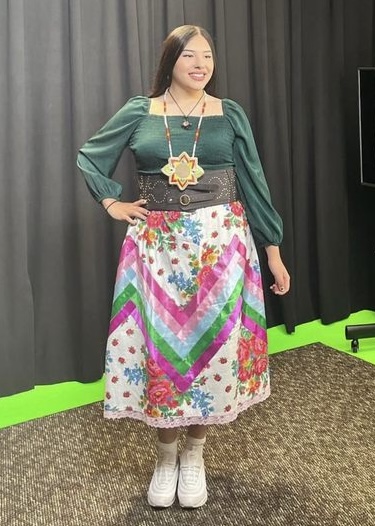
Fry Bread: Can you tell us about the different artistic mediums you work with?
Levering: The one I’ve been doing for the longest is that I’m a beadwork artist. In my traditions of the Ho-Chunk, people we adopted this way from the Lakota, who are our neighbors to the north. The beads came from trading with the fur traders who came through, they brought these beads with them. We took that and we traded for furs in exchange for all kinds of goods. I create all kinds of art–multimedia, multi-textile, all kinds of different things that you can bead. You can bead virtually anything. The thing I like to bead most is Regalia. Those are moccasins, leggings, hair ties and accessories that go with the jingle dress dance. I’m an active member of the pow-wow circuit, and I love to pow-wow throughout the summers. That’s kind of just my way of life. I bead for all my family. It’s really time-consuming, but I do it for the people who I love, and spreading that love throughout Indian Country is me. It all started with just offering to bead for other high school students, and that’s kind of where that business of beading and selling came from [Sauce Creations].
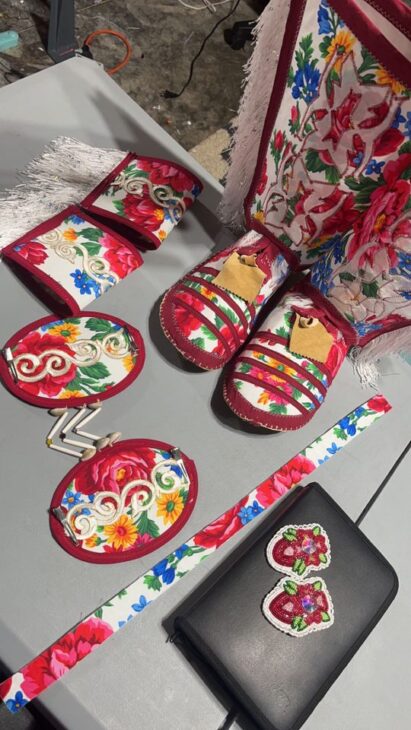
Along with beading, I also do seamstress work. I like to make our outfits. So along with the pow-wow circuit, there are Regalia that you’re supposed to wear, and there are various types of Regalia for women, and there are different types of Regalia for men. I know how to make all kinds- basically, every outfit you can think of. I know how to make it for each dance style, and so I’m really proud of that. I didn’t grow up doing pow-wow dancing, I didn’t grow up sewing, I didn’t even grow up in a very traditional household. I kind of bounced around from different foster homes, and throughout those foster homes, I got to see what that kind of pow-wow life is like and see the hard work that goes into creating those pieces of art and how much love it takes to make those kinds of things. That’s where my inspiration to do this kind of work came from. I have my business page on social media, I post what I make on there [Sauce Creations]. I primarily do my beading and sewing during breaks. Here, on spring break, I plan to make a lot of stuff for my upcoming trips. I like to look nice, I feel like the way that I represent myself is by wearing beadwork, wearing ribbon skirts, or any other type of Regalia, just incorporating it within the business style that we’re supposed to come in every day. It shows a lot of my pride and my cultural heritage, and I’m very proud of being Ho-Chunk.
Fry Bread: You mentioned Jingle Dress Dancing. Can you tell us more about it?
Levering: The Jingle Dress Dance comes from the Anishinaabe tribe up in White Fish Bay, Ontario, Canada. This dance comes from the White family. Maggie White was a girl, way back in the mid-1900s, I believe she’s still alive today, and she fell sick. She fell sick with a disease. Her dad had a dream, he was a medicine man. He had a dream that this woman came, and she came in the room with all her sisters, and they went around his daughter and danced around her, and the men danced as well. Both men and women can do this dance, but it primarily went to the women because it healed Maggie when they danced. They had cones on their dress, and later found out to be tobacco lids of like old chew cans, they were rolled and put on the dress. There are 365 cones on that dress to represent each of the days throughout the year. They danced that dance, and the sound that the jingles make is almost like the sound of rain falling, and it’s beautiful. it healed Maggie White and she went on to carry that dance all over Indian Country. My tribe, the Ho-Chunk, we’re in the Great Lakes region. We’re just neighbors to that tribe and we adopted that dance. That dance is everywhere throughout Indian Country today. There are various styles of dance, I dance the old-style jingle dress. The old style is the most traditional. I dance it in the style of the originators because it’s not mine to change. I don’t come from the Anishinaabe people, so it’s a borrowed dance for me. I was mentored by one of my aunties, Jennylynn Wilkie, and she’s married to an Anishinaabe man; that’s my rite of passage to this dance. I always try to be respectful of their ways.
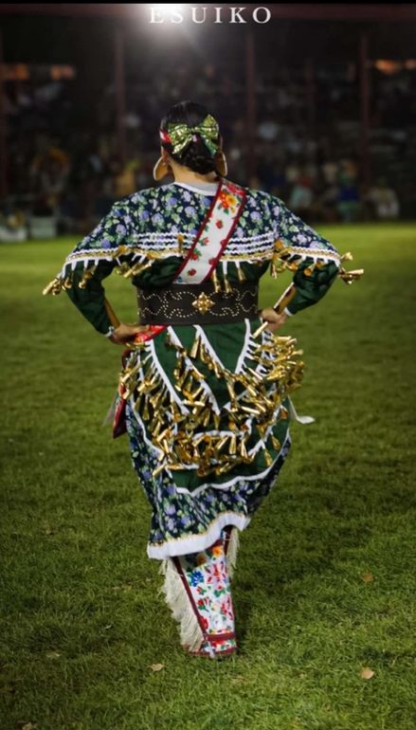
I love dancing because it helps me stay active. I also love the competition aspect of pow-wows. I’ve been doing this since I was about 15 years old, and it’s helped me learn leadership. It’s helped me learn how to carry myself. It’s helped me learn how to not be shy, how to not be bashful in front of other people, and it’s taught me public speaking. When I was a teenager, I was about 14 years old, we had powwow pageants, and I ran in a pageant for Miss Flandreau Santee Sioux. It’s a nation up in South Dakota, I ran for that Princess, and I ended up getting it. I was crowned senior Miss Flandreau Santee Sioux, 2019-2020, and I got to go to all of these pow-wows … I got to represent myself and speak my language in front of everyone and invite them to Miss Flandreau Santee Sioux pow-wows. That’s really what helped me become the person I am today. I take a lot of pride in my dancing, and I love helping others start their journey to become pow-wow dancers.
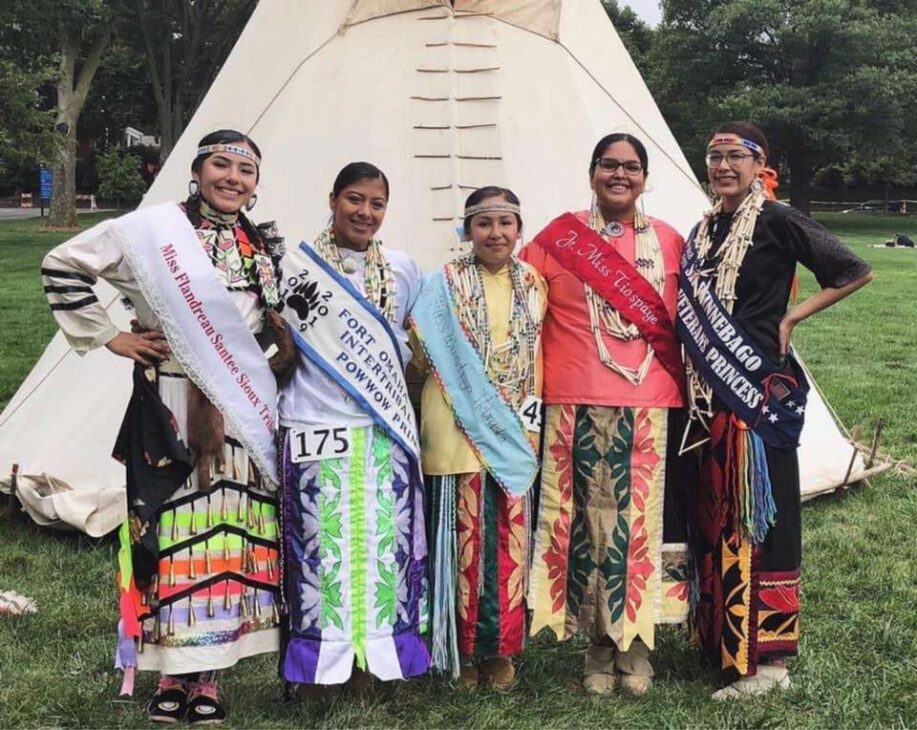
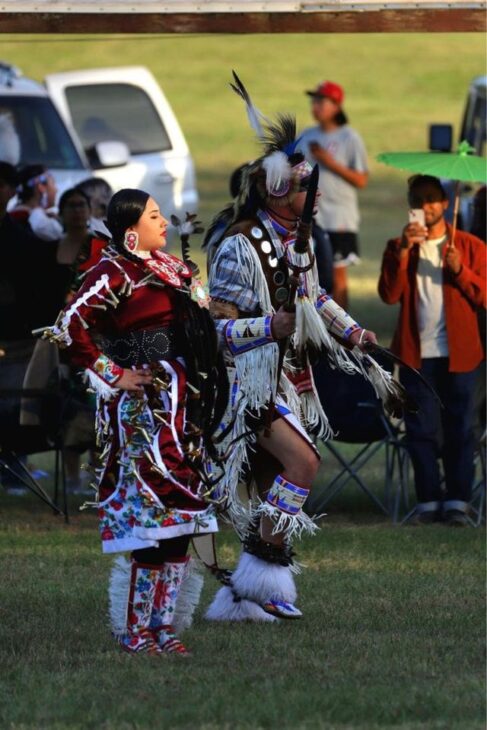
Fry Bread: Going back to your bead and fiber works, you use purple, yellow, red and white often. Is there a significance to those colors?
Levering: My sister [Ava (Wihuh) Levering], her first color was red. I had a brother who passed away, his name was Cornell Hamilton Jr., he was a singer for the Whitetail Boys drum group. At these pow-wows, there are various drum groups. He was the only one out of my family who was drawn to the pow-wow circle. Our men, they’re the songbirds of our people. They’re our language carriers, and they are songbearers. It takes a really blessed person and you have to have a clear mind for those songs to come to you. We view them as sacred people. My brother passed away about two years ago and we stopped dancing for a while, but that didn’t feel right to my family. We wanted to carry on in a good way and keep his legacy going as pow-wow dancers. That year, I made me and my little sister red outfits, and we reintroduced ourselves back into the pow-wow circuit as young adults. The last time we danced was when we were little teenage girls, coming into the women’s category in our red was significant to me. Honoring my brother’s legacy as a singer, and walking in a good way, and giving back to the community.
I do purple, gold and white for Haskell. I ran for Miss Haskell last year, and it was a really fun experience. I made sure that I had my threads right when it came to pageant time, It’s always a really fun thing for me to create those things for myself. Customarily, your parents take care of that stuff for you. I’m kind of in a situation where I don’t have my parents by my side all the time. They don’t really know the pow-wow ways, to be completely honest. It’s my adoptive family and others who looked after me as a young girl who taught me those ways. Everything I make comes exactly from me. I was able to make my family, the Levering Family of the Winnebagos, our own design to carry on throughout these next legacies and coming generations of love and girls, they’re going to be able to use the design that I made. Those things are real special to me, and that’s why I do it, because there wasn’t anyone before me to do it for them and so I sewed for my whole family.
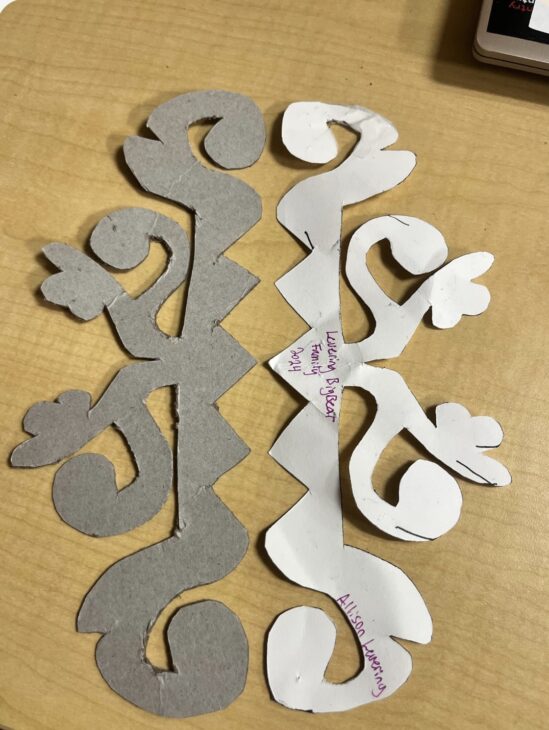
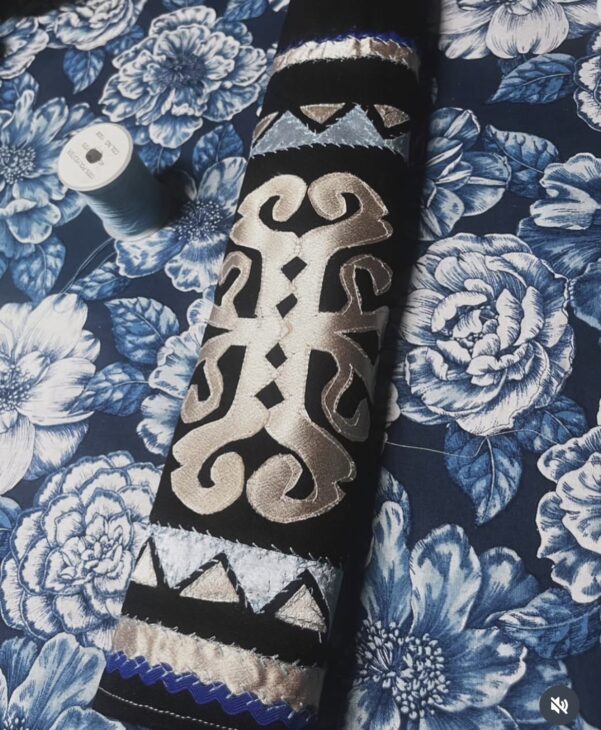
Fry Bread: Can you tell us about a project or piece you are more proud of?
Levering: I’m proud of all of it, honestly. It’s just a way of life for me and I love to do it. It just gives me so much happiness and so much healing to keep me moving forward. I feel like every time I’m able to express myself, every chance I get away from school to make art, it makes me happy, and it makes me proud to be Indigenous, proud to be Ho-Chunk, proud to be a big sister, and proud to have these abilities gifted to me from the creator. It’s all a blessing. I can’t pick one.
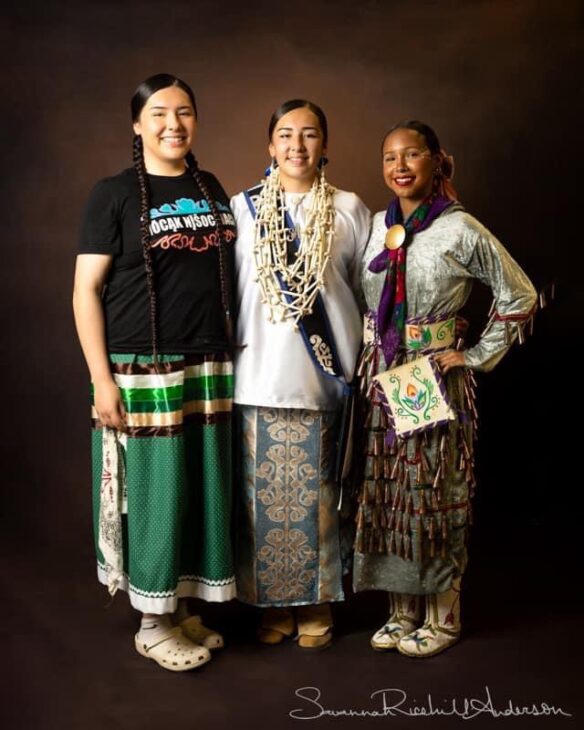
Fry Bread: Thank you for sharing your art with us! Is there anything else you would like to add?
Levering: Check out KJHK 90.7 FM, the Haskell Hour on Thursdays. Check out my music on SoundCloud, @maakewi. I didn’t touch on that, but I’m starting a new media, making my own music, and I’m excited about that, just in its beginning stages. I think there are a lot of directions I want to go with that. Also, stay tuned on my TikTok for a lot of stuff I have I’ve been dropping, a lot more on Instagram. Good Morning Indian Country is looking really nice this semester. I’m so excited for the future. Onward Haskell.
Check out Levering’s work on her Instagram, TikTok, and SoundCloud.
